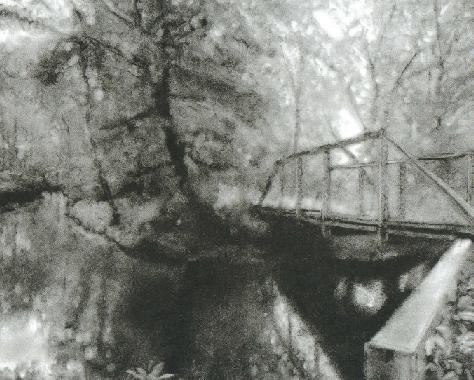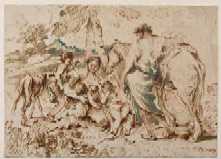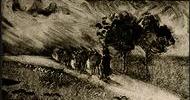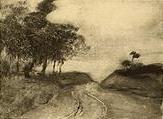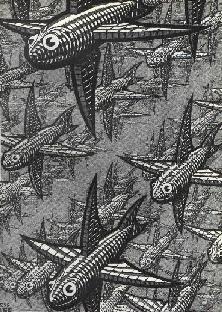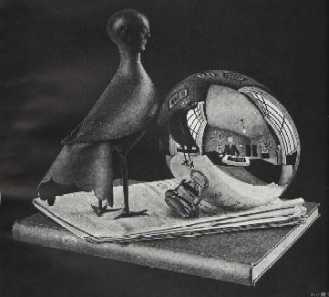[Collection of Margit Nemeth] A print is created by pressing a "plate" against a piece of unmarked paper. The plate is a surface that contains paint or ink - it can be in various colors, or just a black, brown or other single color. The plate can be glass, plastic, wood, stone or metal. There are many kinds of prints. In some, the plate is a surface such as wood where parts have been chiselled away so they do not press against the paper. Only the parts that remain after chiselling will hold the color that transfers itself to the paper. An opposite process is where a surface like a flat stone or sheet of copper is cut with scratches and grooves. When you put color on the surface and wipe it away, the grooves retain color so that when pressed against paper what is held in the grooves transfers to the paper. These processes, called wood-cuts when the raised surface of wood carries the color, or etching when incised copper is used, can produce multiple copies. Until the wood or metal wears down, one plate can produce dozens or hundreds of copies of the print by repeatedly applying color and pressing the plate against a fresh piece of paper. Monotype is different. In monotype you paint a picture on a flat surface (glass, plastic or metal) and press it against paper to copy what is there. It can happen only once - a monotype is a single original print and you cannot make other copies unless you re-draw the picture, which accounts for the "mono" in the name. (Some faint remains of paint might be left behind, allowing a second or "ghost" print, which has different light and dark values and may produce a print of interest, although different from the first print.) Monotype as a form of printing has been around since the 17th century, when an Italian Rennaissance artist, Castiglione, adopted it about the same time Rembrandt also used a form of monotype combined with his etchings. Since then it has been used by many artists, such as Degas, Paul Gauguin, Matisse, Picasso and among modern painters, Jasper Johns, Richard Diebenkorn, Robert Motherwell and Mary Frank. Here are some early examples of the use of monotype, beginning with the first, Castiglione:
To illustrate
other kinds of prints: One famous printmaker, M. C. Escher of Holland,
worked on both woodcuts and lithographs. Because wood is such a rough substance,
wood-cuts tend to be more blocky and chunky; copper and stone allow fine
details and thin lines. Here is a comparison to show the difference between
these two approaches to print making.
Monotypes
allow greater leeway in style and coloring than either woodcuts or lithographs.
Monotype is essentially a painter's medium, since the artist uses paint
directly on the plate rather than making marks that will hold the paint.
Tucker Hill elects to paint his monotypes in a single color for reasons
similar to a photographer's choice to use black-and-white film - to emphasize
the power of light, and to avoid the distraction of colors.
|
||||||||||||||||||||||||
